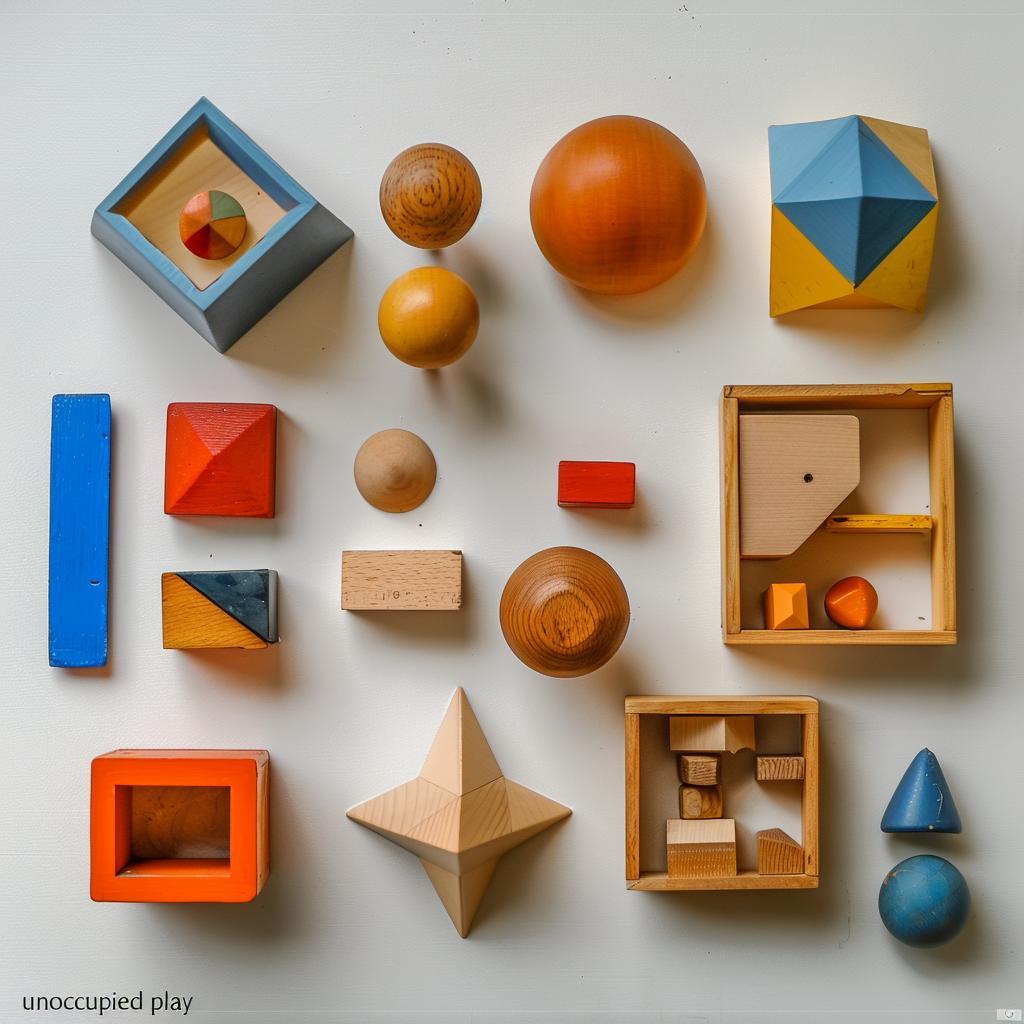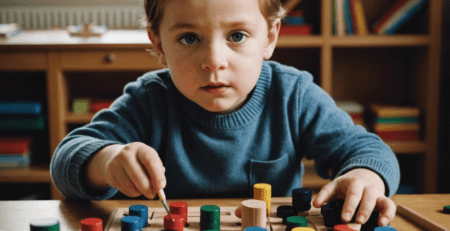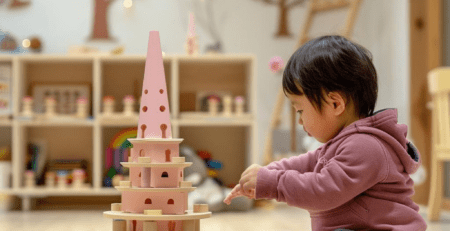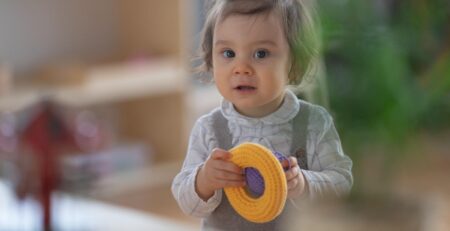
30
The Power of Unoccupied Play for Child Development
In today’s fast-paced world, children are often inundated with structured activities and screen time, leaving little room for unoccupied play. This type of unstructured, imaginative play is not only a time-honored tradition, but also crucial for a child’s cognitive, emotional, and social development. In this article, we will explore the importance of unoccupied play, its benefits, and how parents and caregivers can create opportunities for this valuable form of recreation in their children’s lives. Join us as we delve into the world of unoccupied play and discover its potential to nurture creativity, problem-solving skills, and overall well-being in young minds.
Table of Contents
- The Importance of Unoccupied Play
- Encouraging Unoccupied Play in Children
- Benefits of Unoccupied Play
- Creating a Space for Unoccupied Play
- Promoting Independent Exploration through Unoccupied Play
- Q&A
- Wrapping Up
The Importance of Unoccupied Play
Unoccupied play refers to the type of play where children engage in activities that are not directed by adult intervention or specific toys. This type of play allows children to use their imagination and creativity to explore the world around them. It is a crucial part of a child’s development as it helps them build essential skills and characteristics that will benefit them in the long run.
Why is unoccupied play important?
- Develops creativity and imagination
- Builds problem-solving skills
- Encourages independence
- Promotes self-regulation
- Enhances social skills
Unoccupied play allows children to think outside the box and come up with their own ideas and activities. It fosters creativity and imagination as children explore and experiment with different ways to play. This type of play also helps children develop problem-solving skills as they figure out how to entertain themselves without adult guidance. In addition, unoccupied play encourages independence as children learn to entertain themselves and rely on their own resources.
Moreover, unoccupied play promotes self-regulation as children learn to manage their own time and emotions while engaging in activities they enjoy. It also enhances social skills as children may interact with others in unstructured play settings, learning important skills such as cooperation, negotiation, and conflict resolution. unoccupied play is crucial for a child’s development as it helps them build essential life skills that will benefit them in their academic and personal lives.
| Develops creativity and imagination | Encourages independence |
| Builds problem-solving skills | Promotes self-regulation |
| Enhances social skills |
Encouraging Unoccupied Play in Children
Unoccupied play, also known as free play, is a valuable and essential part of a child’s development. It allows children to use their imagination, creativity, and problem-solving skills. In today’s digital age, it’s more important than ever to encourage unoccupied play in children to help them develop essential life skills and foster independence. Here are some tips to help encourage unoccupied play in your children:
Provide an Environment for Unoccupied Play
- Create a play space that allows for unstructured play, such as a cardboard box or open outdoor area.
- Avoid over-scheduling your child’s time with structured activities, leaving ample time for them to engage in unoccupied play.
- Provide open-ended toys and materials that allow for creativity, such as building blocks, art supplies, and dress-up clothes.
Foster Independence
Encouraging unoccupied play also means fostering independence in children. It’s important to allow them the freedom to make their own choices and decisions during playtime. Avoid hovering and micromanaging, and instead, give them the space to explore and experiment on their own.
Encourage Outdoor Play
Outdoor play offers endless opportunities for unoccupied play. Nature provides a rich environment for children to engage their senses and creativity. Encourage your child to explore the natural world, whether it’s through gardening, hiking, or simply playing in the backyard.
| Benefits of Unoccupied Play | Ways to Encourage |
|---|---|
| Develops creativity | Provide open-ended toys and materials |
| Improves problem-solving skills | Foster independence |
| Enhances social and emotional development | Encourage outdoor play |
By encouraging unoccupied play in children, you’re helping them develop essential skills that will benefit them throughout their lives. It’s important to provide a balance of structured and unstructured activities to ensure that children have the opportunity to engage in free play and explore their creativity and imagination.
Benefits of Unoccupied Play
Unoccupied play, also known as free play or open-ended play, is an essential component of a child’s development. In a world where structured activities and screen time have become the norm, unoccupied play allows children to use their imagination, creativity, and problem-solving skills without adult intervention. This type of play encourages self-expression, independence, and cognitive development in children.
One of the key benefits is the opportunity for children to explore and discover their surroundings at their own pace. This type of play allows children to follow their own interests and curiosity, which can lead to a deeper understanding and appreciation of the world around them. By engaging in unoccupied play, children learn to think critically and creatively, as they are not bound by specific rules or guidelines. This freedom allows them to develop their own solutions to problems and challenges, fostering a sense of independence and confidence.
Another significant benefit of unoccupied play is the development of social and emotional skills. When children engage in unoccupied play with their peers, they learn valuable communication, negotiation, and conflict-resolution skills. This type of play encourages cooperation, sharing, and taking turns, which are essential skills for building positive relationships with others. Moreover, unoccupied play provides a safe space for children to express and regulate their emotions, leading to a better understanding of themselves and others. unoccupied play is crucial for a child’s overall development, promoting creativity, independence, and social-emotional skills in a fun and engaging way.
Unoccupied play is an invaluable part of a child’s development, offering countless benefits for their growth and well-being. As parents and caregivers, it is important to encourage and allow children the time and space for unoccupied play, as it is essential for their cognitive, social, and emotional development. By providing children with opportunities for unoccupied play, we are supporting their natural curiosity, creativity, and self-expression, ultimately helping them to become well-rounded and resilient individuals.
Creating a Space for Unoccupied Play
Unoccupied play, also known as free play, happens when children engage in spontaneous and imaginative activities without adult direction or structured goals. It is essential for their development as it fosters creativity, problem-solving skills, and emotional regulation. As parents or caregivers, is crucial in supporting children’s growth and well-being.
One way to create a space for unoccupied play is to provide open-ended toys and materials. Items such as blocks, art supplies, dress-up clothes, and nature items like sticks and stones allow children to use their imagination and creativity without limitations. This type of play fosters independent thinking and decision-making skills, which are valuable for children’s cognitive development. Additionally, having a designated play area where children can freely explore and engage in unstructured activities is beneficial. This could be a corner in the living room, a backyard play space, or a specific room in the house that is dedicated to unoccupied play.
Another important aspect of create a space for unoccupied play is to limit screen time and electronic devices. While technology has its benefits, excessive screen time can hinder children’s ability to engage in imaginative play. Encouraging outdoor play, providing books, and engaging in hands-on activities can all contribute to creating a space that prioritizes unoccupied play. By allowing children the freedom to explore and play without constant adult supervision, they can develop vital skills that will serve them throughout their lives.
Incorporate Nature Items in the Play Space
One great way to encourage unoccupied play is to incorporate nature items into the play space. This could include items such as rocks, sticks, leaves, or shells. These natural materials can serve as open-ended toys, allowing children to use their creativity and imagination to transform them into whatever they desire. Not only does this foster a deep connection with nature, but it also promotes problem-solving skills and resourcefulness. To create a nature-inspired play space, consider adding a wooden table or a designated area for children to display and organize their natural treasures.
Encouraging Physical Activity
Encouraging physical activity in the play space is another important aspect of promoting unoccupied play. Including items such as balls, jump ropes, hula hoops, or a small indoor trampoline can provide children with opportunities for active, unstructured play. This not only promotes physical health but also allows children to engage in imaginative activities that require movement and exploration. Additionally, consider incorporating child-sized furniture or play structures that encourage active play and movement. By providing a variety of physical play options, children are more likely to engage in unoccupied play that promotes both creativity and physical well-being.
Promoting Independent Exploration through Unoccupied Play
Unoccupied play refers to a type of play in which a child engages in free and spontaneous activities without a specific goal or structure. This type of play encourages children to use their imagination, creativity, and problem-solving skills, making it an essential component of their development. To promote independent exploration through unoccupied play, it is important for parents and caregivers to understand the benefits and provide an environment that fosters this type of play.
The Benefits of Unoccupied Play
Unoccupied play allows children to explore their surroundings, try out different roles, and experiment with various objects. This type of play promotes independence, self-discovery, and confidence, as children learn to make their own choices and decisions. It also enhances cognitive development, as children engage in open-ended activities that require them to think critically and creatively. Additionally, unoccupied play encourages social skills, as children learn to interact with others and negotiate their play without adult intervention.
Creating an Environment for Unoccupied Play
To encourage unoccupied play, it is important to provide children with a variety of open-ended toys and materials, such as blocks, art supplies, and dress-up costumes. These materials should be easily accessible and organized in a way that allows children to choose what they want to play with. It is also important to create a safe and stimulating environment that allows children to explore and experiment freely. Limiting screen time and providing opportunities for outdoor play can also contribute to promoting unoccupied play.
| Benefits | Environment |
| Encourages independence | Provide open-ended toys and materials |
| Enhances cognitive development | Create a safe and stimulating environment |
| Promotes social skills | Limit screen time and encourage outdoor play |
is essential for the holistic development of children. By understanding the benefits and creating a supportive environment, parents and caregivers can empower children to engage in unstructured play that fosters creativity, imagination, and problem-solving skills.
Q&A
What is unoccupied play?
Unoccupied play is a type of play where a child is not actively engaged in a specific activity or task. The child may appear to be daydreaming or simply observing their surroundings.
Is unoccupied play beneficial for children?
Yes, unoccupied play allows children to develop their imagination, creativity, and observation skills. It also gives them the freedom to explore their thoughts and ideas without any external pressures or expectations.
How can parents encourage unoccupied play?
Parents can provide a stimulating environment with open-ended toys and materials, and allow their children the time and space to engage in unstructured, unoccupied play. It’s important for parents to resist the urge to constantly schedule their children’s time and to allow for moments of free, unstructured play.
Are there any concerns associated with unoccupied play?
While unoccupied play is generally beneficial, it is important for parents to ensure that their children are in a safe and supervised environment, especially for young children. Additionally, some children may require more structured activities to keep them engaged and focused.
Does unoccupied play continue to be important as children grow older?
Yes, unoccupied play remains important for children as they grow older. It is a way for them to process their thoughts and emotions, develop problem-solving skills, and foster independence. As children mature, unoccupied play can evolve into activities such as journaling, drawing, or simply spending time in quiet contemplation.
Wrapping Up
Unoccupied play is a critical component of childhood development that should not be overlooked. It provides children with the freedom to explore their imagination, creativity, and problem-solving skills without the constraints of structured activities. By allowing children the opportunity for unoccupied play, we are fostering their independence, resilience, and ability to think outside the box. As parents, educators, and caregivers, it is important for us to recognize the value of unoccupied play and to create environments that support and encourage this type of unstructured exploration. Let’s embrace the power of unoccupied play and ensure that every child has the chance to experience the joy and benefits it brings to their overall development.










